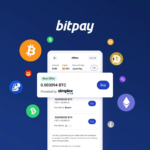About Minaprotocol
Minaprotocol is a minimal “succinct blockchain” built to curtail computational requirements in order to run DApps more efficiently. Mina has been described as the world’s lightest blockchain since its size is designed to remain constant despite growth in usage. Furthermore, it remains balanced in terms of security and decentralization. The project was rebranded from Coda Protocol to Mina in October 2020.
- About Minaprotocol
- Important Points Table Of Minaprotocol
- How to Buy the Minaprotocol Coin & Trade On Exchange?
- What Is Mina Protocol’s Main Objective?
- The world’s lightest blockchain, powered by participants
- Easily Accessible, Now & Always
- Truly Decentralized, with Every User Acting as a Full Node
- Dapps, Where People Control Their Data
- Connecting Crypto to the Real World
- Powered by a Growing Community
- It’s Time to Own Our Future
- How Does Mina Protocol Function?
- How Transactions Happen On Mina
Important Points Table Of Minaprotocol
| Basic | Points |
|---|---|
| Coin Name | Minaprotocol |
| Short Name | MINA |
| Max Supply | 280,410,274.84 MINA |
| Explorer | Click Here To View |
| Chat | Click Here To Chat |
| Website | Click Here To Visit |
How to Buy the Minaprotocol Coin & Trade On Exchange?
What Is Mina Protocol’s Main Objective?
Mina is working on achieving an efficient distributed payment system that enables users to natively verify the platform right from the genesis block. Its technical whitepaper calls this a “succinct blockchain.”
The protocol uses Zero-Knowledge Succinct Non-Interactive Arguments of Knowledge (zk-SNARKs), a cryptographic proof that enables someone to authenticate information without revealing said information. However, enabling a user to trace the platform back to its genesis block can be impractical in a large network. As such, Mina incrementally computes SNARKS that concentrate only on the last few blocks — meaning that end-users check that zk-SNARK-compressed proof, instead of a block’s entire transaction history.
The world’s lightest blockchain, powered by participants
Mina is building a gateway between the real world and crypto — and the infrastructure for the secure, democratic future we all deserve.
By design, the entire Mina blockchain is about 22kb1 – the size of a couple of tweets. So participants can quickly sync and verify the network.
Easily Accessible, Now & Always
Other blockchain protocols are so heavy they require intermediaries to run nodes, recreating the same old power dynamics. But Mina is light, so anyone can connect peer-to-peer and quickly sync and verify the chain. Built on a consistent-sized cryptographic proof, the blockchain will stay accessible—even as it scales.
Truly Decentralized, with Every User Acting as a Full Node
With Mina, anyone who’s syncing the chain is also validating transactions like a full node. Mina’s design means any participant can take part in proof-of-stake consensus, have access to strong censorship-resistance and secure the blockchain.
Dapps, Where People Control Their Data
Today, users have no alternative to handing over their data to powerful players in exchange for participation in the modern world. But Mina’s SNARK-powered decentralized apps (Snapps) keep users in control by validating and sharing proofs about their data — rather than the data itself. Even to counterparties. And with logic and data computed off-chain and verified on-chain, Snapps make scalability simple and large computations efficient and cost-effective.
Connecting Crypto to the Real World
Other blockchain protocols don’t interact with the internet, limiting their applications’ scope and utility. But Minaprotocol Snapps can privately interact with any website and access verified real world data for use on-chain. So developers can leverage the world’s information in computing and decision-making to change the way they live and work — without ever compromising the privacy of users’ sensitive data.
Powered by a Growing Community
Other blockchains are run by powerful ecosystem intermediaries. But Mina is powered by participants, with an uncapped number of block producers. Our inclusive community unites people around the world with a passion for decentralized blockchain. In fact, they have one of the largest and most active communities of any project launched in the last two years.
It’s Time to Own Our Future
Why did they create the world’s lightest blockchain? To rebalance the scales and give anyone with a smartphone the power to participate, build, exchange and thrive.
How Does Mina Protocol Function?
Minaprotocol Coin is similar to Bitcoin, apart from how it handles transactions, but also employs the account model used in Ethereum.
In this respect, the difference between Bitcoin and Ethereum is that the state of the Bitcoin blockchain contains a list of unspent coins, while Ethereum’s state is made up of account balances.
Mina, on the other hand, uses a prover (or snarker, if you will), an equivalent of a miner, to ensure each block commits to the state.
Mina employs the Ouroboros Samasika, a type of PoS mechanism specially designed for succinct decentralized networks since it provides bootstrapping from a genesis block.
Succinct blockchains contain two major functions: verify and update. Verification touches on consensus, blockchain summary and blocks, while the update function interacts with consensus and chain summary.
Apart from the above implementations, the project uses a parallel scan state to optimize transaction processing speed, which works by grouping unproven blocks and assigning the process to parallel provers.
How Transactions Happen On Mina
Minaprotocol process starts with a user initiating a transaction, after which the trade goes to the mempool, a pool of valid but unconfirmed transactions.
Next, snarkers take over by making proofs or SNARKS. The process follows with the selection of a block producer (BP) to bundle transactions into a block. Note that a BP sifts through the mempool for profitable transactions.
Then, the BP chooses a SNARK according to the rules in the consensus mechanism.
Note that a block producer scans through the bids for the lowest-priced SNARK. In addition, recently added transactions have an updated SNARKS order book.
Next, it’s time to incorporate the SNARKS in a block, then add the block to the chain and update the network. Snarked transactions are removed from the chain to help keep the size of the protocol constant.








